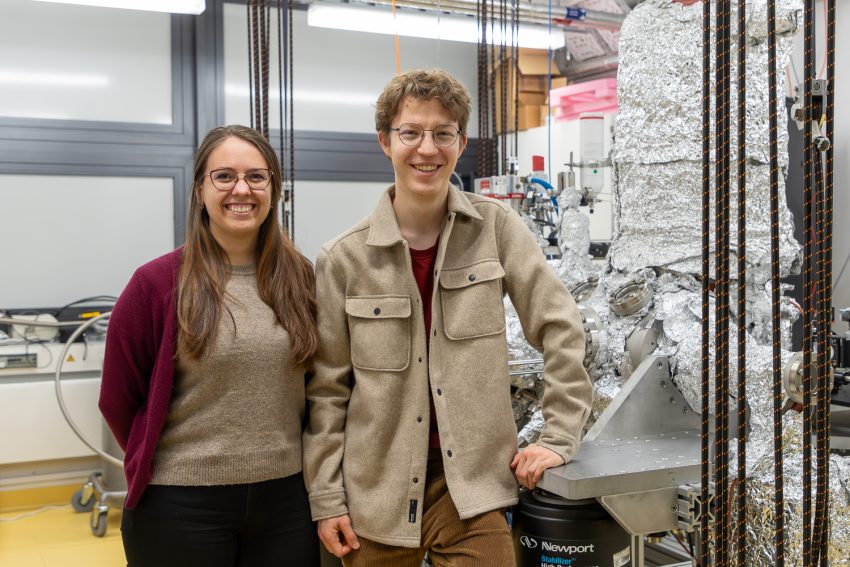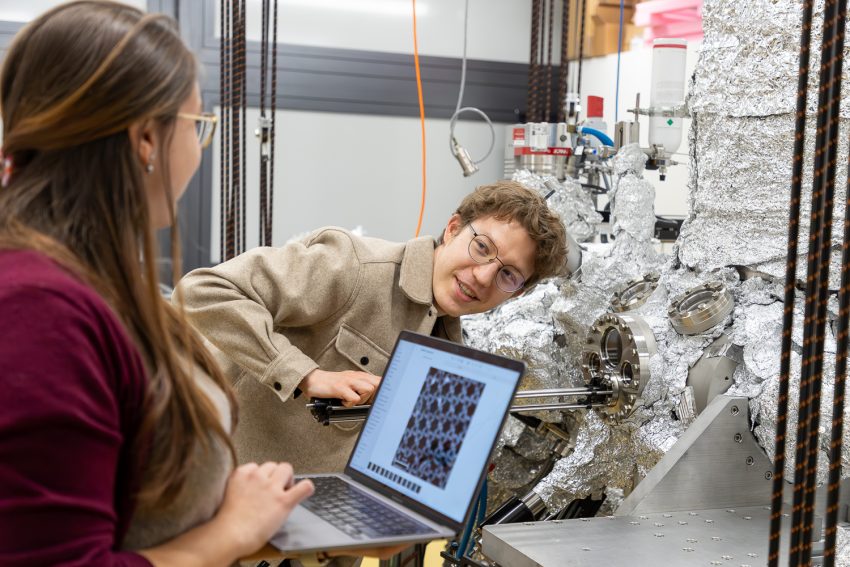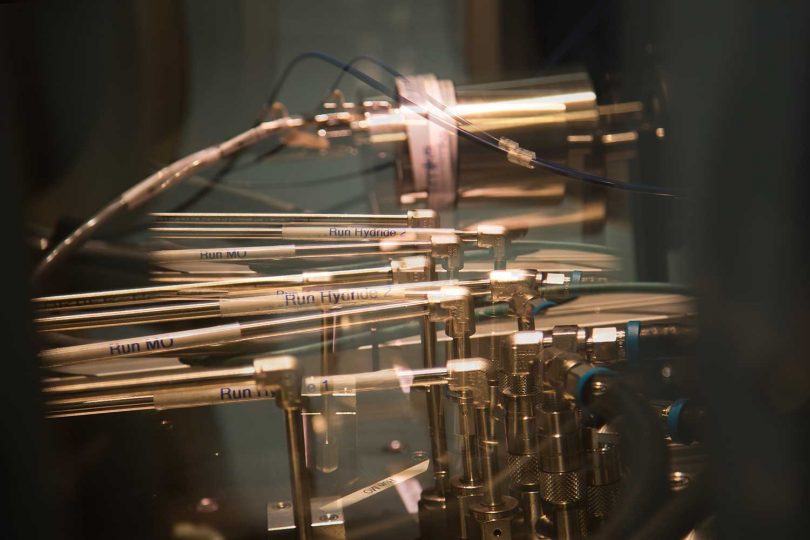AI in microscopy Braunschweig research project delivers consistent results under difficult data conditions
Researchers are working at the limits of what can be measured with ever greater precision. They are even controlling individual atoms and utilising quantum physical peculiarities for new technologies. However, due to the tiny scales involved, even something as seemingly simple as monitoring success becomes a gargantuan task. For example, when surfaces are scanned atom by atom for certain molecules. An interdisciplinary research group at TU Braunschweig, coordinated by Professor Timo de Wolff (Institute of Analysis and Algebra) and Professor Uta Schlickum (Institute of Applied Physics), has therefore developed an artificial intelligence that characterises images from scanning tunnelling microscopes with 99 per cent accuracy.

Mandy Stritzke and Tim Seifert are combining AI with microscopy for their doctorates. Picture credits: Kristina Rottig/TU Braunschweig
Sometimes the correct rotation of the molecule makes all the difference. Similar to left and right hands, molecules can appear mirrored in such a way that no amount of twisting will get them on top of each other. This so-called chirality is one of the many variables that scientists use, for example, to try to make catalysis more efficient or to develop better sensors. But which process leads to an excess of right-turning molecules? Until now, researchers had to painstakingly search for and count the molecules on scanning probe microscopy images by hand after each experiment.
‘For a human, searching for such patterns is laborious and tedious, but it is precisely this kind of pattern recognition that is a strength of artificial intelligence (AI),’ says PhD student Mandy Stritzke. ‘However, an AI needs thousands of labelled training images before it can deliver consistent results on real data. By the time we have collected so many images with the scanning tunnelling microscope, we have already analysed the decisive images by hand for a long time. The big challenge in our project was therefore to generate enough training data for a reliable AI despite having only a few originals.’
Artificial microscope images for 99 per cent reliable AI
In an interdisciplinary collaboration between the Braunschweig Institutes of Applied Physics, Communications Technology and Analysis and Algebra, the researchers succeeded in creating a purely computer-generated training data set that can hardly be distinguished from real images at first glance, without having to collect millions of data beforehand. Subsequently, the AI – which had previously only been trained on artificial images – also recognised the chiral orientation of molecules on real data from a scanning tunnelling microscope with 99% reliability.

The unique photon scanning electron microscope at LENA delivers images accurate to the atom. The precise image information is to be analysed in seconds with the help of AI. Image credit: Kristina Rottig/TU Braunschweig
‘This is not just a success story for those searching for chiral molecules. We were also able to prove the reliability of our concept and want to transfer it to other cases. After all, with more and more research on individual molecules, the search for efficient data analysis is becoming increasingly urgent. Especially for basic research at the LENA research centre or the QuantumFrontiers Cluster of Excellence, we will be able to accelerate our processes in the future,’ says Professor Uta Schlickum.

